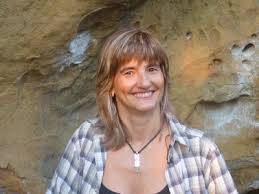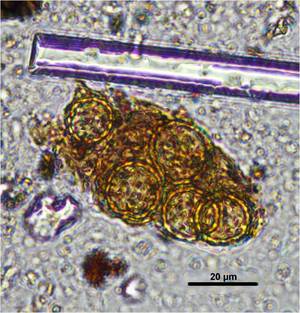They find flowers in a tomb of the Paleolithic

The palinologist of the UPV-EHU, María José Iriarte Chiapusso, has directed the study of the vegetation of the deposit, which has confirmed that the finding is extraordinary and extraordinary: "It is the first time that it has been proven that a deceased was buried and placed flowers in the tomb." The research has been published in the journal Journal of Archaelogical Science, together with Alvaro Arrizabalaga of the UPV and Gloria Cuenca of the University of Zaragoza.
Iriarte explained that it is not easy to find vegetable remains in the deposits: "It is difficult to find residues of vegetable origin compared to other materials, since its fossils are difficult. That is, when we analyze the deposits, we do not find what there was, but what has been able to last in one way or another. It is very important to have it clear, otherwise misinterpretations can be created."
Sample of this is: "For example, a few years ago it was thought that the people of the Paleolithic era mainly carnivorous, because in the caves where people lived they found many animal bones eaten. However, when technological advances have allowed us to carry out more refined studies, we have realized that they also ate foods of vegetable origin. To know things like this we have to go and look for them because they are not visible."
Iriarte has taken charge of studying this aspect in the cave of El Mirón, so it is essential to take into account the vegetation to have a vision as wide as possible. "We have been working in this cave for a long time. Under the direction of Lawrence Straus, of the University of New Mexico, and Manolo González Morales, of the University of Cantabria, the cave is being studied at the level of more than twenty international universities and research centers. It must be taken into account that it is a broad and extensive cave, which for a long time was the place of residence of human beings".
Polen grouped, key
They have now discovered that the level they have studied about 15,500 years ago, two of the bones found, one of the mammals and the other of man, through the technique of carbon 14. The pollen study has allowed them to discover that it is an open space, with trees (mainly pines), ferns and herbaceous plants. According to this, they have concluded that the climate was humid and cold; "rather colder than today", said Iriarte. And they also collected significant data: near the tomb almost half of the pollen was from Chenopodiaciae (49.5%)."

"This domination of the plants of the taxon Chenopodiaciae is striking," said Iriarte. "On the other side of the cave that doesn't happen. In addition, pollen was not as usual, that is, free. Instead it was grouped." Precisely when the plant arrives, Iriarte explains that pollen is dispersed. "Therefore, pollen grains appear individually. However, the pollen we received around the buried woman was as it is in the flower, grouped by six".
Thanks to this they discover that they left the flowers next to the deceased. "There is no other explanation for the pollen to appear like this: those who lived with it left the flowers intentionally in the tomb," said Iriarte.
Questions without answer

According to Iriarte, among the plants of the current Chenopodiaciae taxón are spinach, spinach, spinach... "They have no spectacular flowers, like those we use to decorate. But that is totally cultural. In recent years, for example, cabbages and other orchard plants are placed in the gardens. It is clear, therefore, that by the type of flower we cannot deduce what use they had or why they were placed in the tomb."
According to Iriarte, knowing that flowers have been found in a tomb, many may think that these flowers had a ritual function. "This belief is totally wrong. No longer are all the dead buried within a rite and no flowers are placed to all. In addition, the reason for burial is not only to follow a rite, but to avoid health problems."
In the tomb of the cave of El Mirón, Iriarte has stated that the flowers could have a hygienic function: "Considering that some plants of the taxon Chenopodiaciae have antimicrobial, deep and viral capacity, these flowers may have been placed in the tomb to avoid infections and bad odors."
In any case, Iriarte stressed that these interpretations are only a hypothesis: "We cannot know why the flowers placed the deceased when he was buried. But we know that behavior is unusual and that's what makes it special."





